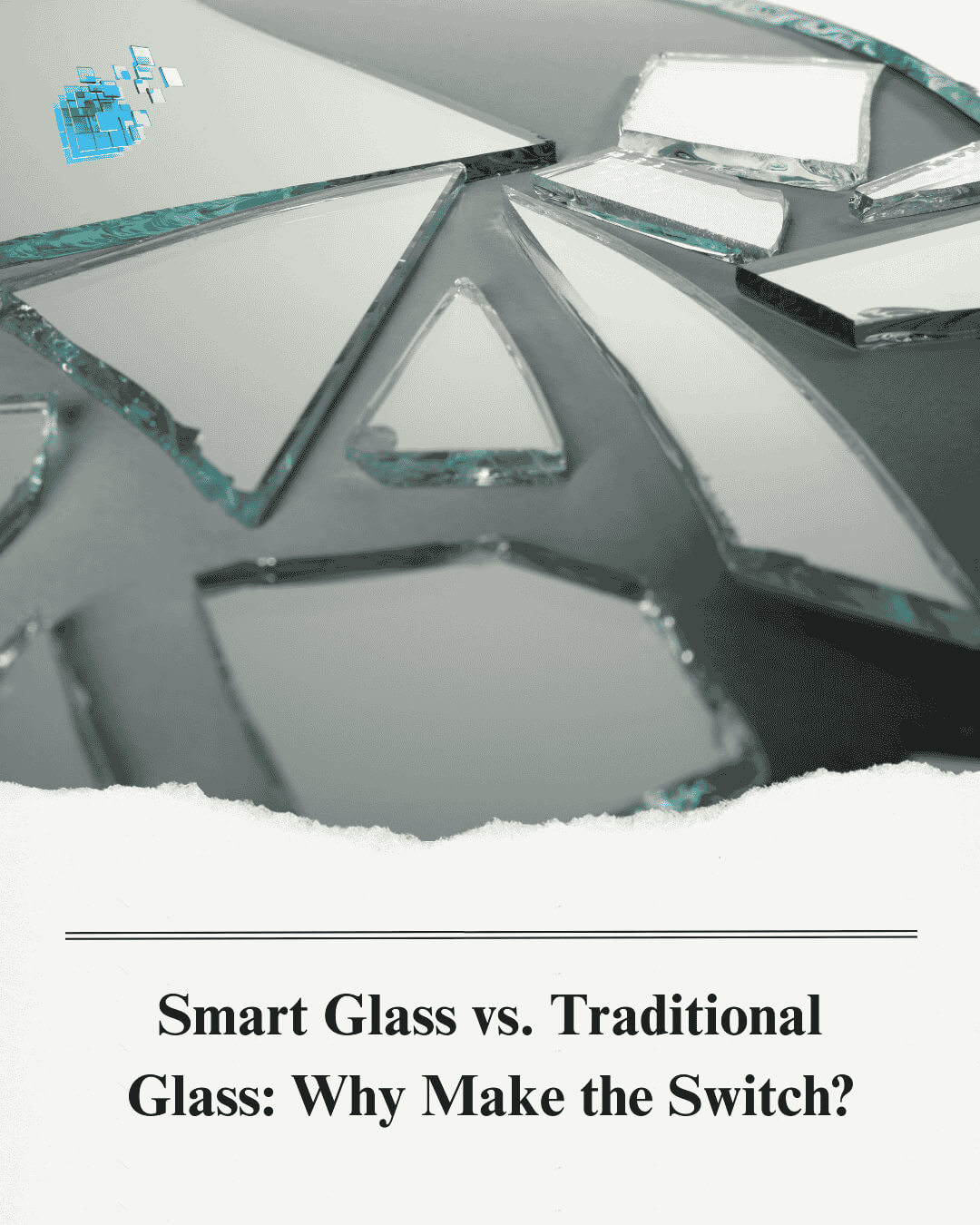
Glass has always been a cornerstone of modern architecture and interior design, celebrated for its transparency and elegance. However, traditional glass has limitations in energy efficiency, privacy, and adaptability.
Enter smart glass, a technological innovation that allows glass to switch between transparent and opaque states, transforming how we experience natural light, privacy, and design aesthetics. From luxury villas to high-end offices, smart glass is becoming the preferred choice, and here’s why the world is making the switch.
Smart glass, also called switchable glass, is designed to change its properties transparency, opacity, or tint based on electrical signals, light, or temperature. Its ability to adapt makes it ideal for controlling heat, glare, and privacy without relying on curtains, blinds, or frosted films with unmatched energy efficiency and cost savings.
There are three main types of smart glass:
This flexibility is one of the reasons smart glass is preferred in modern design over traditional glass.
Traditional glass is static—it cannot change transparency or respond to environmental conditions. While it allows natural light, it offers no control over privacy or heat gain. High sunlight exposure can make interiors uncomfortable, drive up air conditioning costs, and necessitate curtains or blinds that compromise aesthetics.
In contrast, smart glass can be integrated in versatile applications, from glass shower rooms to office partitions, solving these issues elegantly.
One of the biggest advantages of smart glass is energy efficiency. In sunny climates, traditional glass can increase indoor temperatures, requiring more air conditioning. Smart glass regulates heat and light penetration, reducing reliance on HVAC systems and lowering energy bills.
Installing smart glass behind glass splash backs in a kitchen allows homeowners to enjoy natural sunlight without overheating the room. The ability to control transparency also helps prevent UV damage to furniture and flooring.
Privacy is often a challenge in spaces with large glass panels. Traditional glass requires curtains, blinds, or frosted treatments, which can limit natural light and add maintenance tasks. Smart glass solves this by allowing instant control over transparency.
In glass shower rooms, smart glass instantly switches to opaque mode, providing privacy while maintaining a sleek and modern design. Office spaces with glass partitions benefit from dynamic privacy options for meetings without the need for additional window treatments.
Smart glass enhances design possibilities. Its minimalist and modern look removes the need for decorative coverings, making interiors feel open and sophisticated. Architects can use it in various settings, including:
This adaptability makes smart glass a preferred choice for contemporary villas, hotels, and offices.
Smart glass has a higher upfront cost than traditional glass. However, the long-term benefits—including energy savings, reduced maintenance, and increased property value—make it a worthwhile investment.
Retrofitting existing windows with smart films offers many of the advantages of full smart glass at a fraction of the cost. These films transform standard glass into adaptive surfaces, ideal for both residential and commercial projects.
Both traditional and smart glass are durable. However, smart glass reduces the need for additional coverings like blinds or frosted panels, lowering maintenance requirements. It is particularly useful in high-touch surfaces like glass worktops or decorative panels, where cleanliness and aesthetic appeal are essential.
Smart glass is increasingly used across different spaces:
These applications demonstrate how smart glass improves comfort, efficiency, and design while addressing the limitations of traditional glass.
| Feature | Smart Glass | Traditional Glass |
|---|---|---|
| Transparency Control | Switchable clear/opaque | Fixed, requires curtains or frosted film |
| Energy Efficiency | Reduces heat gain, lowers AC costs | High heat gain, increases cooling costs |
| Privacy | Instant, adjustable | Requires blinds, curtains, or frosted film |
| Aesthetic Appeal | Sleek, modern, adaptable | Static; may need additional treatments |
| Maintenance | Low; no coverings needed | High; regular cleaning and dusting |
| Cost | Higher upfront, long-term savings | Lower upfront, potential higher energy costs |
| Applications | Villas, offices, hotels, retail | Standard residential and commercial uses |
Smart glass is not a fleeting trend—it is shaping the future of modern architecture. Its adaptability, energy efficiency, and design flexibility make it ideal for sustainable construction. As technology advances, smart films and other cost-effective solutions are making smart glass accessible for retrofits and new constructions alike.
Designers can now create spaces that adapt to occupant needs, whether through controlling natural light, enhancing privacy, or improving energy efficiency. This level of adaptability is unmatched by traditional glass.
Smart glass differs from normal glass because it can change its transparency or opacity on demand using electric or electrochromic technology, whereas normal glass has a fixed transparency that cannot be altered.
Glass is made in the UAE to meet the high demand from the construction and architectural sectors, reduce dependence on imports, and support local industrial growth.
The disadvantages of smart glass include its higher cost, the need for electricity or control systems to operate, potential durability issues over time, and limited options for DIY repairs.
Alternatives to smart glass include window films such as tinted or reflective films, curtains or blinds, and frosted or laminated glass.
With applications in glass worktops, glass splash backs, glass shower rooms, reflective and tinted glass, and smart films, smart glass is transforming both residential and commercial spaces. While traditional glass remains functional, smart glass provides the adaptability, elegance, and sustainability required for modern living.
For homeowners, architects, and designers looking to combine innovation, comfort, and efficiency, smart glass is the clear choice for the future.
I highly recommend Murtaza Glass & Frames Trd LLC is the authorized service provider for glass work in Dubai, delivering high-quality solutions that satisfy architects and clients alike.